Cleaning in Place Equipment
This CIP system runs strong cleaning cycles to protect your food line.
The EasyReal Cleaning in Place equipment heats water, adds detergent, and pushes the cleaning fluid through your system in a closed loop. It scrubs the inside of pipes, tanks, valves, and heat exchangers without disassembly.
Three cleaning stages. Zero product contact.
Each cycle includes a pre-rinse, chemical wash, and final rinse. This keeps bacteria out and stops leftover food from spoiling your next batch. The process uses hot water, acid, alkali, or disinfectant—depending on your product and hygiene level.
Automatic, safe, and traceable.
With a smart PLC + HMI control system, you can monitor flow, temperature, and cleaning time in real-time. Set up cleaning recipes, save them, and run them at the push of a button. It reduces human error, keeps things consistent, and gives you proof of clean for every cycle.
EasyReal builds CIP systems with:
-
Single tank, double tank, or triple tank configurations
-
Automatic temperature and concentration control
-
Optional heat recovery systems
-
Stainless steel (SS304/SS316L) sanitary design
-
Flow rates from 1000L/h to 20000L/h
Used in every clean food factory.
Our Cleaning in Place system works in all industries where hygiene matters. You’ll see it in:
-
Dairy processing: milk, yogurt, cream, cheese
-
Juice and beverage: mango juice, apple juice, plant-based drinks
-
Tomato processing: tomato paste, ketchup, sauces
-
Aseptic filling systems: bag-in-box, drum, pouch
-
UHT / HTST sterilizers and tubular pasteurizers
-
Fermentation and mixing tanks
CIP keeps your product safe.
It removes leftover material, kills germs, and stops spoilage. For factories making high-value food products, even one dirty pipe can cause a full-day shutdown. Our system helps you avoid that risk, meet FDA/CE hygiene standards, and reduce downtime between batches.
Global projects rely on our CIP systems.
From Asia to the Middle East, EasyReal CIP equipment is part of hundreds of successful turnkey projects. Clients choose us for our full-line compatibility and easy-to-integrate controls.
Dirty pipes don’t clean themselves.
In liquid food processing, internal residues build up quickly. Sugar, fiber, protein, fat, or acid can stick to surfaces. Over time, this creates biofilms, scaling, or bacterial hotspots. These aren’t visible—but they’re dangerous.
Manual cleaning isn’t enough.
Removing pipes or opening tanks wastes time and increases contamination risk. For complex systems like UHT lines, fruit pulp evaporators, or aseptic fillers, only CIP systems can clean fully, evenly, and without risk.
Each product requires different cleaning logic.
-
Milk or protein leaves fat that needs alkaline detergent.
-
Juices with pulp need higher flow velocity to remove fiber.
-
Sauces with sugar need warm water first to prevent caramelization.
-
Aseptic lines need disinfectant rinse at the end.
We design CIP programs that match the product’s cleaning needs—ensuring zero cross-contamination and maximum line uptime.
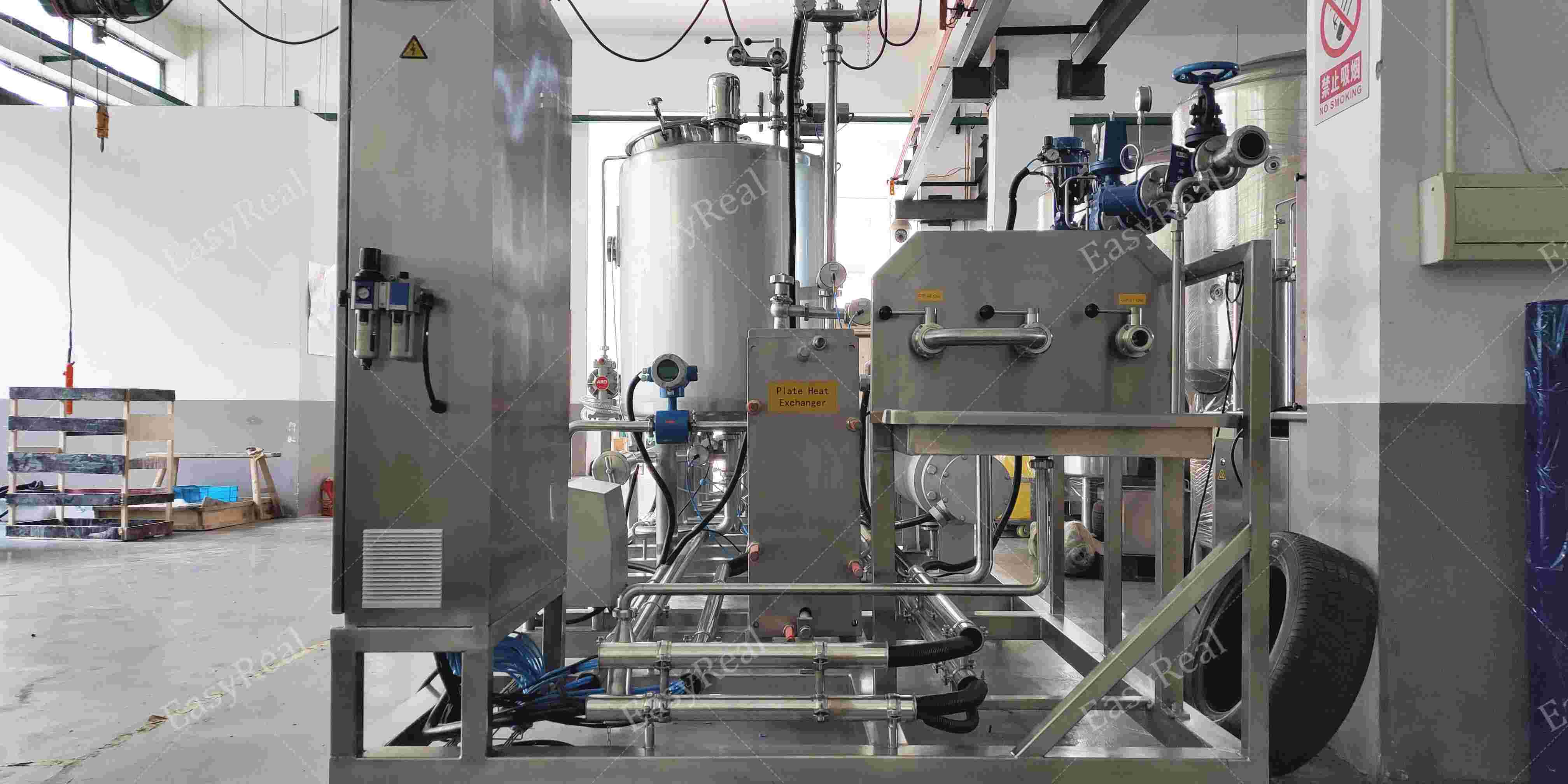
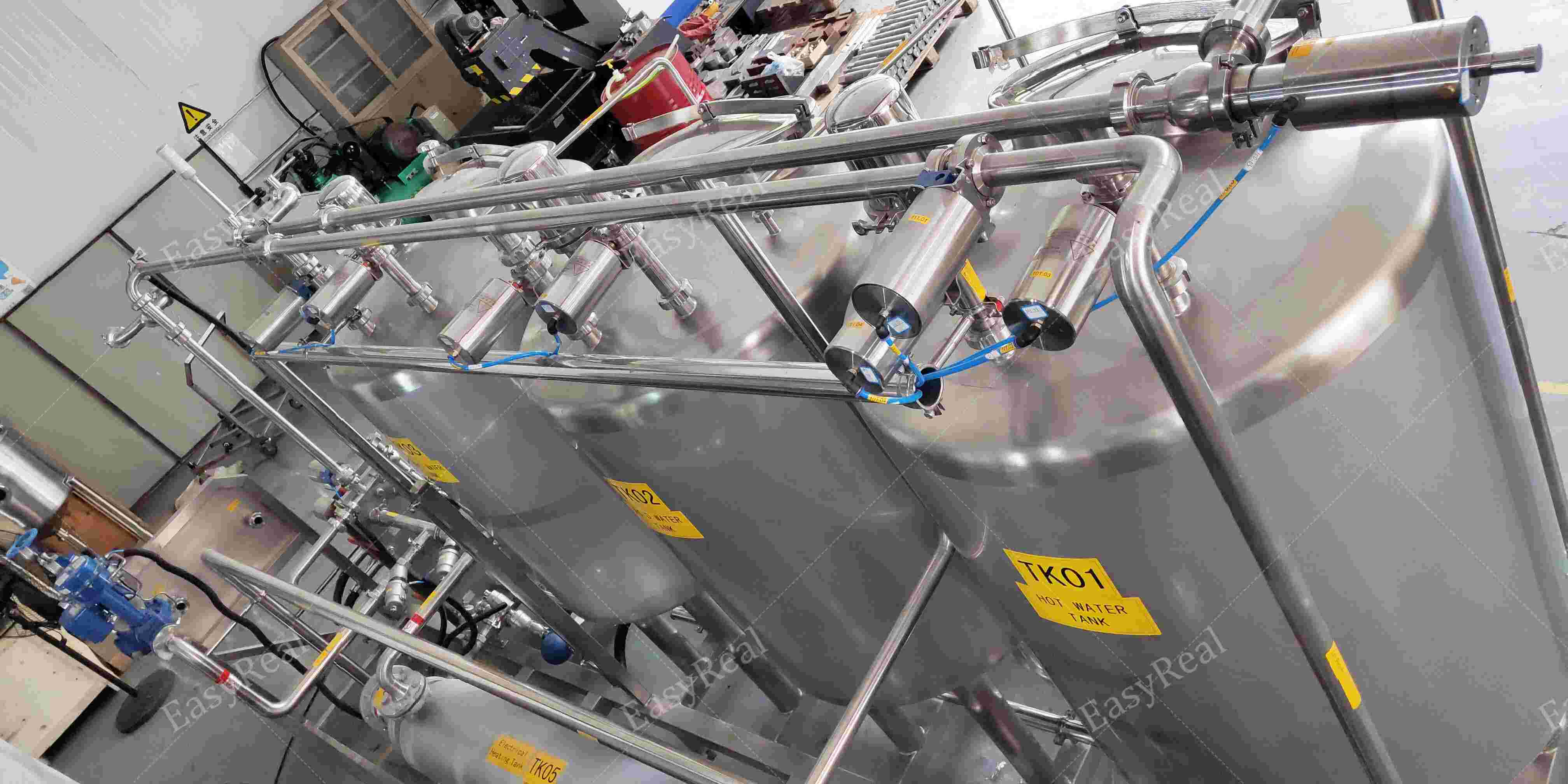
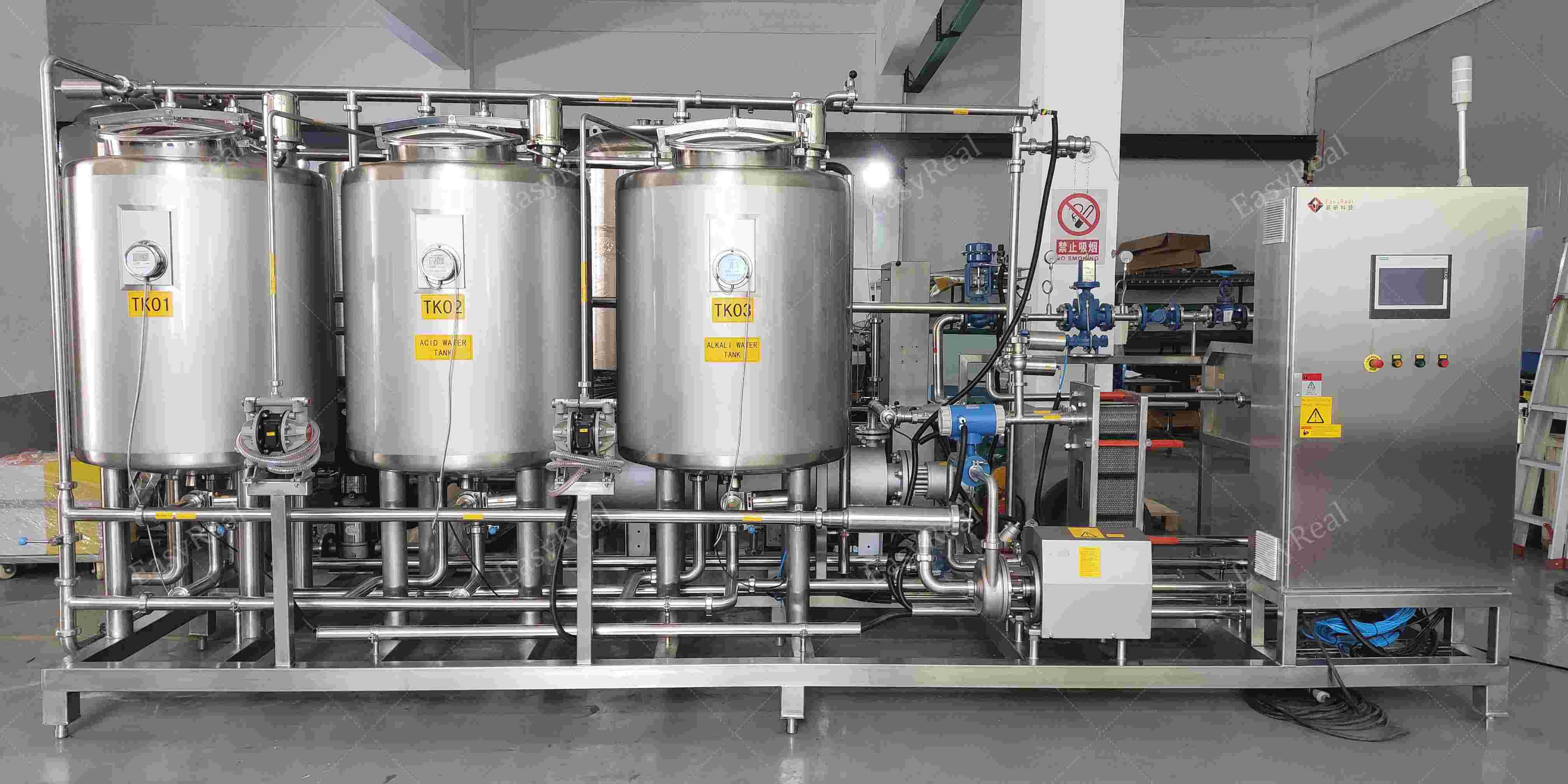
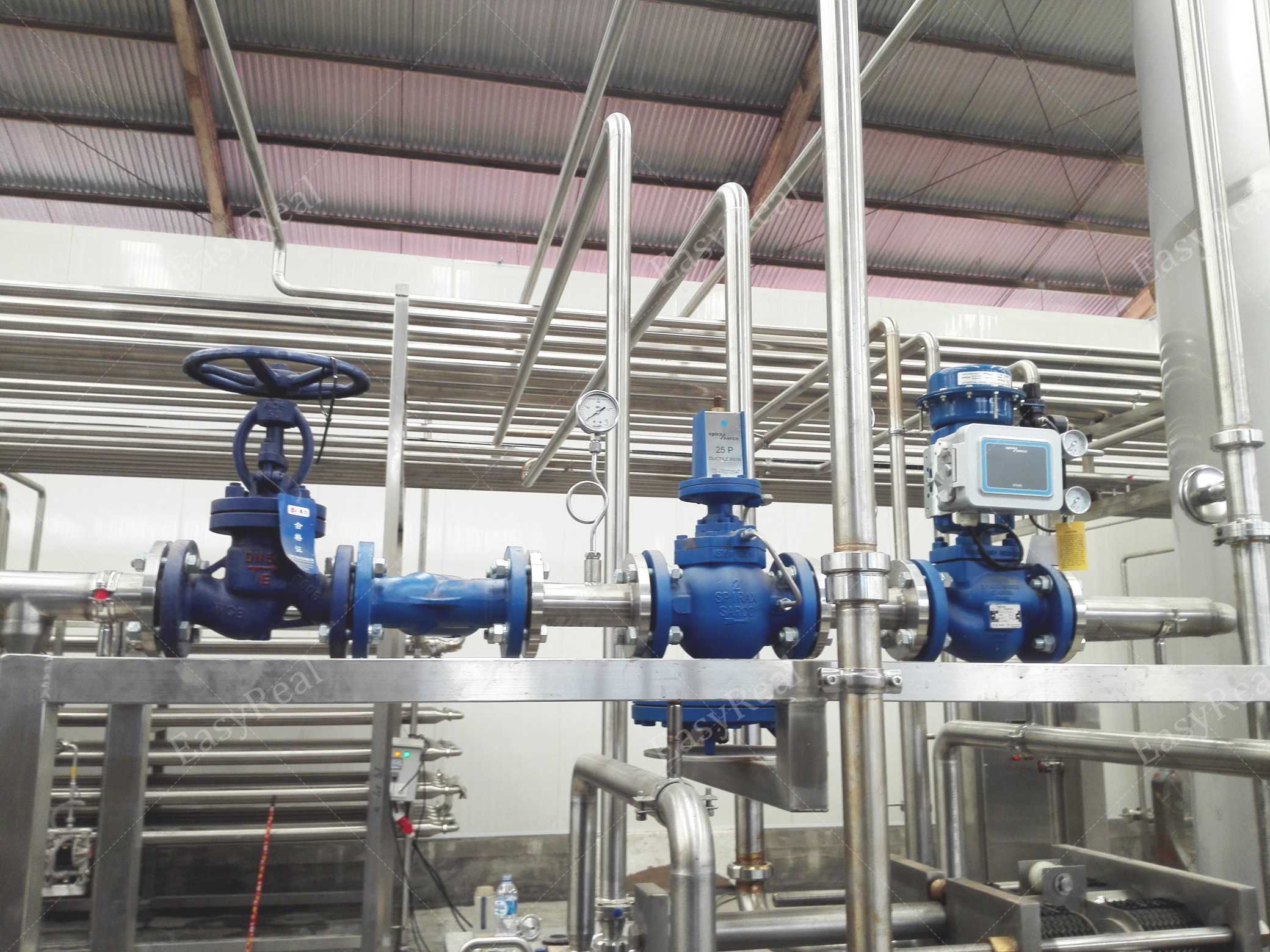
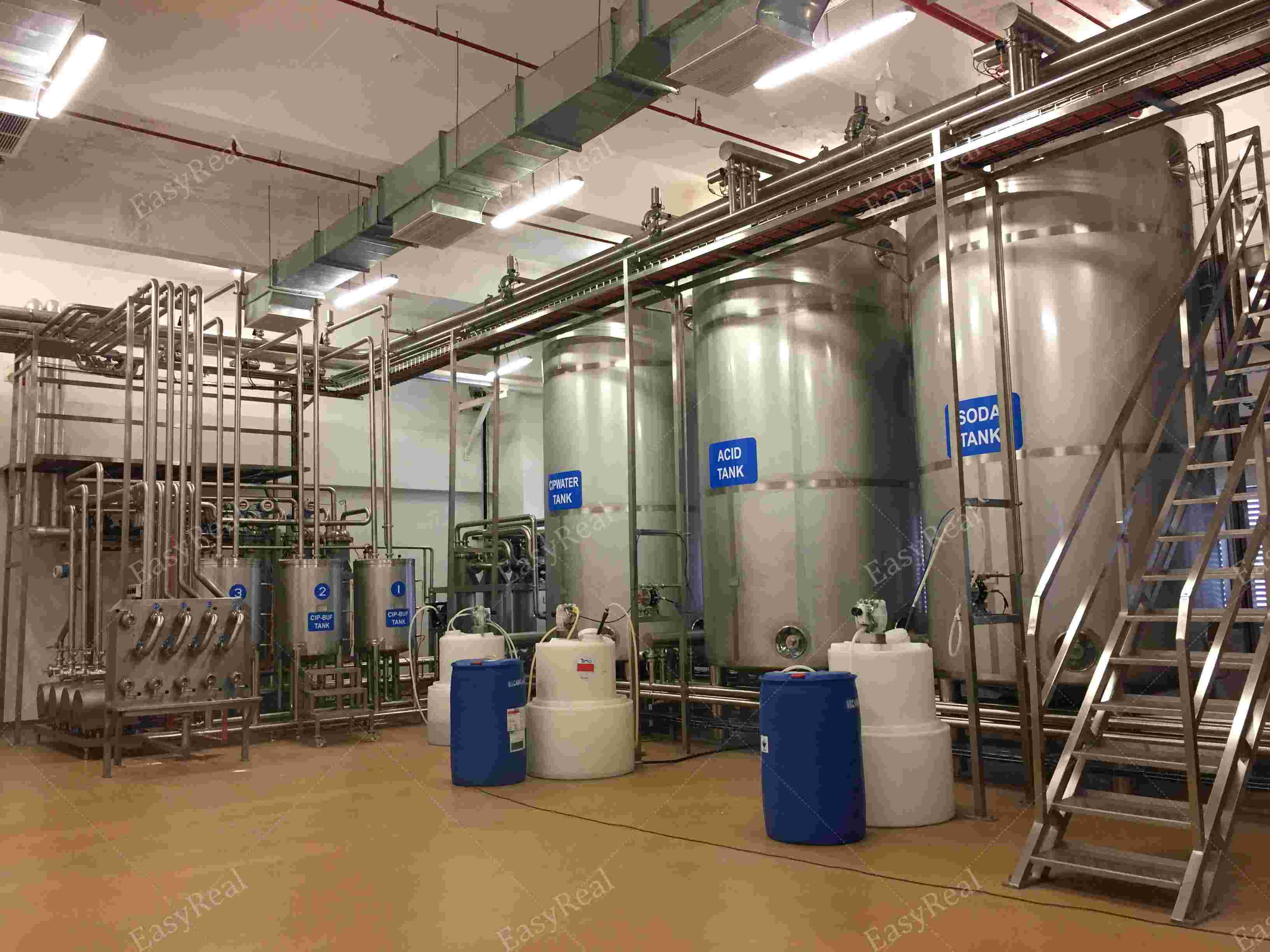
Start by thinking about your factory’s size and layout.
If your plant runs 1–2 small lines, a double-tank semi-auto CIP might be enough. For full-scale tomato or dairy processing lines, we recommend fully automatic triple-tank systems with smart scheduling.
Here’s how to choose:
-
Tank quantity:
– Single tank: suitable for manual rinsing or small R&D labs
– Double tank: alternate between cleaning and rinsing fluid
– Triple tank: separate alkali, acid, and water for continuous CIP -
Cleaning control:
– Manual valve control (entry-level)
– Semi-auto (timed cleaning with manual fluid control)
– Full auto (PLC logic + pump + valve auto control) -
Line type:
– UHT/pasteurizer: needs precise temperature and concentration
– Aseptic filler: requires final sterile rinse and no dead ends
– Mixing/blending: needs large tank volume rinse -
Capacity:
From 1000 L/h to 20000 L/h
We recommend 5000 L/h for most mid-size fruit/juice/dairy lines -
Cleaning frequency:
– If switching formulas often: choose programmable system
– If running long batches: heat recovery + high-capacity rinse tank
We help you select the best unit based on your layout, budget, and cleaning goals.
The Cleaning in Place (CIP) process includes five key steps. The entire process runs inside your factory’s closed pipes—no need to disconnect or move equipment.
Standard CIP Workflow:
1. Initial Water Rinse
→ Removes leftover product. Uses water at 45–60°C.
→ Duration: 5–10 minutes depending on pipeline length.
2. Alkaline Detergent Wash
→ Removes fat, protein, and organic residue.
→ Temperature: 70–85°C. Duration: 10–20 minutes.
→ Uses NaOH-based solution, automatically controlled.
3. Intermediate Water Rinse
→ Flushes out detergent. Prepares for acid step.
→ Uses same water loop or fresh water, depending on setup.
4. Acid Wash (Optional)
→ Removes mineral scale (from hard water, milk, etc.)
→ Temperature: 60–70°C. Duration: 5–15 minutes.
→ Uses nitric or phosphoric acid.
5. Final Rinse or Disinfection
→ Final rinse with clean water or disinfectant.
→ For aseptic lines: may use peracetic acid or hot water >90°C.
6. Drain and Cooldown
→ Drains system, cools to ready state, auto-closes loop.
Each step is logged and tracked. You’ll know which valve opened, what temperature was reached, and how long each cycle ran.
CIP Tanks (Single / Double / Triple Tank)
The tanks hold cleaning liquids: water, alkaline, acid. Each tank includes steam jackets or electric heating coils to reach target temperature quickly. A level sensor tracks fluid volume. Tank materials use SS304 or SS316L with sanitary welding. Compared to plastic or aluminum tanks, these offer better heat retention and zero corrosion.
CIP Pumps
High-flow sanitary centrifugal pumps push cleaning liquid through the system. They operate at up to 5 bar pressure and 60°C+ without losing flow. Each pump has a stainless steel impeller and flow control valve. EasyReal pumps are optimized for low energy use and long runtime.
Heat Exchanger / Electric Heater
This unit heats cleaning water quickly before it enters the circuit. Electric models suit small lines; plate or tube heat exchangers suit large lines. With PID temperature control, heating stays within ±1°C of setpoint.
Control Valves & Flow Sensors
Valves open or close automatically to direct flow through tanks, pipes, or backflow. Paired with flow sensors and conductivity meters, the system adjusts pump speed and switches steps in real-time. All parts are CIP-capable and follow sanitary standards.
PLC Control System + Touchscreen HMI
Operators use the screen to select cleaning programs. The system logs each cycle: time, temperature, flow, valve status. With password protection, recipe presets, and remote control capability, it offers full traceability and batch logging.
Pipe & Fittings (Food-Grade)
All pipes are SS304 or SS316L with polished interior (Ra ≤ 0.4μm). Joints use tri-clamp or welded connections for zero dead ends. We design pipelines to avoid corners and minimize fluid retention.
One cleaning system fits many product lines.
Our Cleaning in Place system supports a wide range of materials—from thick fruit pulp to smooth dairy liquids. Each product leaves behind different residues. Pulp creates fiber buildup. Milk leaves fat. Juices may have sugar or acid that crystalizes. We build your CIP unit to clean them all—effectively and without damage to pipes or tanks.
Switch between products without cross-contamination.
Many clients run multi-product lines. For example, a tomato sauce factory may switch to mango puree. Our Cleaning in Place equipment can store up to 10 preset cleaning programs, each tailored to different ingredients and pipeline designs. This makes changeovers quick and safe, even for complex product mixes.
Handle acidic, protein-rich, or sugar-based materials.
We select cleaning agents and temperatures based on your raw materials.
-
Tomato lines need acid rinse to remove seed and fiber stains.
-
Dairy lines require hot alkali to remove protein and kill bacteria.
-
Fruit juice pipelines may need high flow to remove sugar film.
Whether your process involves concentrated paste or high-viscosity juice, our CIP system keeps your output clean and consistent.
Full control with just one screen.
Our Cleaning in Place system comes with a smart control panel powered by a PLC and HMI touchscreen. You don’t need to guess. You see everything—temperature, flow, chemical concentration, and cycle time—all on one dashboard.
Make your cleaning process smarter.
Set up cleaning programs with specific temperatures, durations, and fluid paths. Save and reuse programs for different product lines. Each step runs automatically: valves open, pumps start, tanks heat—all by schedule.
Track and log every cleaning cycle.
The system records each run:
-
Time and date
-
Cleaning fluid used
-
Temperature range
-
Which pipeline was cleaned
-
Flow speed and duration
These records help you pass audits, ensure safety, and improve efficiency. No more manual logbooks or forgotten steps.
Support remote monitoring and alarms.
If the cleaning flow is too low, the system alerts you. If a valve fails to open, you see it instantly. For large plants, our CIP system can link to your SCADA or MES system.
EasyReal makes cleaning automatic, safe, and visible.
No hidden pipes. No guesswork. Just results you can see and trust.
Let’s design the CIP system that fits your factory.
Every food plant is different. That’s why we don’t offer one-size-fits-all machines. We build Cleaning in Place systems that match your product, space, and safety goals. Whether you’re building a new factory or upgrading old lines, EasyReal helps you do it right.
Here’s how we support your project:
-
Full factory layout design with cleaning flow planning
-
CIP system matched to UHT, filler, tank, or evaporator lines
-
On-site installation and commissioning support
-
User training + SOP handover + long-term maintenance
-
Remote technical support and spare parts supply
Join 100+ clients worldwide who trust EasyReal.
We’ve delivered CIP equipment to juice producers in Egypt, dairy plants in Vietnam, and tomato factories in the Middle East. They chose us for fast delivery, reliable service, and flexible systems that just work.
Let’s make your plant cleaner, faster, and safer.
Contact our team now to start your Cleaning in Place project. We’ll respond within 24 hours with a proposal that fits your line and budget.




